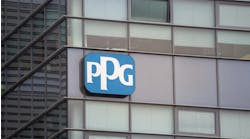Chattanooga faced a moment in truth in 1969 when Walter Cronkite declared the city to the most polluted in the nation.
Chattanooga had a heavy industrial base, and in 1969, unregulated emissions from industries, railroads and coal furnaces caused high concentrations of particulate matter. Determined to correct the situation the city approved the Air Pollution Control Ordinance in late 1969. By 1972 every major pollution source in Hamilton County was in compliance.
Manufacturing retained its strength in the region and by 1976 the sector accounted for a greater share of total employment in the state than in the rest of the country. Transportation equipment, machinery and chemicals were the major products. Then in 1983 the manufacturing landscape changed completely as Nissan Motor Co. set up shop and brought advanced technology to the area. GM arrived shortly thereafter eventually producing its Saturn model.
With the growth of the auto industry and its supply chain, the region has gained notoriety for its high tech manufacturing capability and was designated as advanced tech area by the national government.
“The technology advancement of the area is really a case of Chattanooga getting back to its entrepreneurial roots,” explains Charles Wood, vice president of economic development for the Chattanooga Area Chamber of Commerce. “Coca-Cola figured out how to bottle its product in this city, Chattum Drug was founded in 1879 in the city (was later sold to Sanofi) and many Fortune 250 companies were founded here. Continuing in the tradition of innovative companies, 3D printing is now finding a home here.”
Over the past few years, the city has become a hub for 3D printing. The backbone of the growth of this sector is the city’s gigabit internet network. The fiber network that permits Gig service was installed by Chattanooga's publicly owned electric power system, EPB, to support the most advanced smart grid system in the nation. The smart grid is the first killer app for Chattanooga's Gig network. This network provides the speed necessary for 3D printers.
“The availability of a variety of 3D printers, some so new that they aren’t even on the market yet, is a big draw for our company” explains Keith Campbell, CEO of 3D Ops.
His company uses CT scans and MRIs to build 3D printed models of body parts, so that surgeons can better plan medical procedures. His company converts an MRI to a 3D printable file. And the cost of printing a model is affordable, with an average of $400, since most cases involve printing a specific part, an aorta value for example, and not an entire organ.
The models provide surgeons with a more accurate approach to simulated surgery, decreasing the overall amount of time spent in the operating room. “The surgeons are able to hold physical models of body parts that they will operate on and allow them to practice surgery techniques for better patient outcomes,” says Campbell.
Another 3D company, Branch Technology, came to Chattanooga to participate in in GIGTANK, a boutique accelerator for startups that is the only startup accelerator wired to a metro-wide gigabit network, and ended up setting up shop in the city. Recently the company announced it 3D printed interior walls to scale. The company uses the world’s largest freeform 3D printer to print cellular matrixes out of ABS plastic, and then reinforces those structures with carbon fiber. They then use whatever material needed for a particular project to create the exterior of the walls.
3D Infrastructure
The technology necessary for the 3D companies to thrive was brought about by an aggressive economic plan that resulted in the city becoming America’s first “Gig City” in 2010 with a citywide gigabit (1,000 Mbps) Internet service.
“Chattanooga has a culture of collaboration,” explains Woods. “We do a good job bringing people together over a number of issues.”
And the next big issue that requires a collaborative effort is plan called Drive to 55. It’s an alliance of private sector partners, leaders and non-profits working together in support of the state’s initiative to equip 55% of Tennesseans with a college degree or certificate by 2025.
The goal of the Drive to 55 Alliance is to help generate greater private sector awareness, ownership and support for the long-term steps needed in college entry and completion, adult education and training, and identifying and closing skills gaps to better prepare the workforce for the jobs of the future.
One of the tactics to reach this goal is the Tennessee Promise scholarship program that provides two-years of tuition-free community or technical college to Tennessee high school graduates beginning with the Class of 2015.
The creation and ultimately the success of these programs is the attitude of the business sector in the city. “It’s a culture of doors being opened,” says Woods.
One particularly large undertaking is called THRIVE 2055. It is public-private endeavor across the 16-county, tri-state Chattanooga region of Southeast Tennessee, Northwest Georgia and Northeast Alabama to create economic growth strategies.
The totality of the region’s economic development, which includes improvements to the downtown area and events that appeal to younger people, adds up to create an area that will both attract and retain the workforce. “When people come to Chattanooga for work or pleasure, the city steals a part of their heart and they want to stay here,” explains Campbell.




